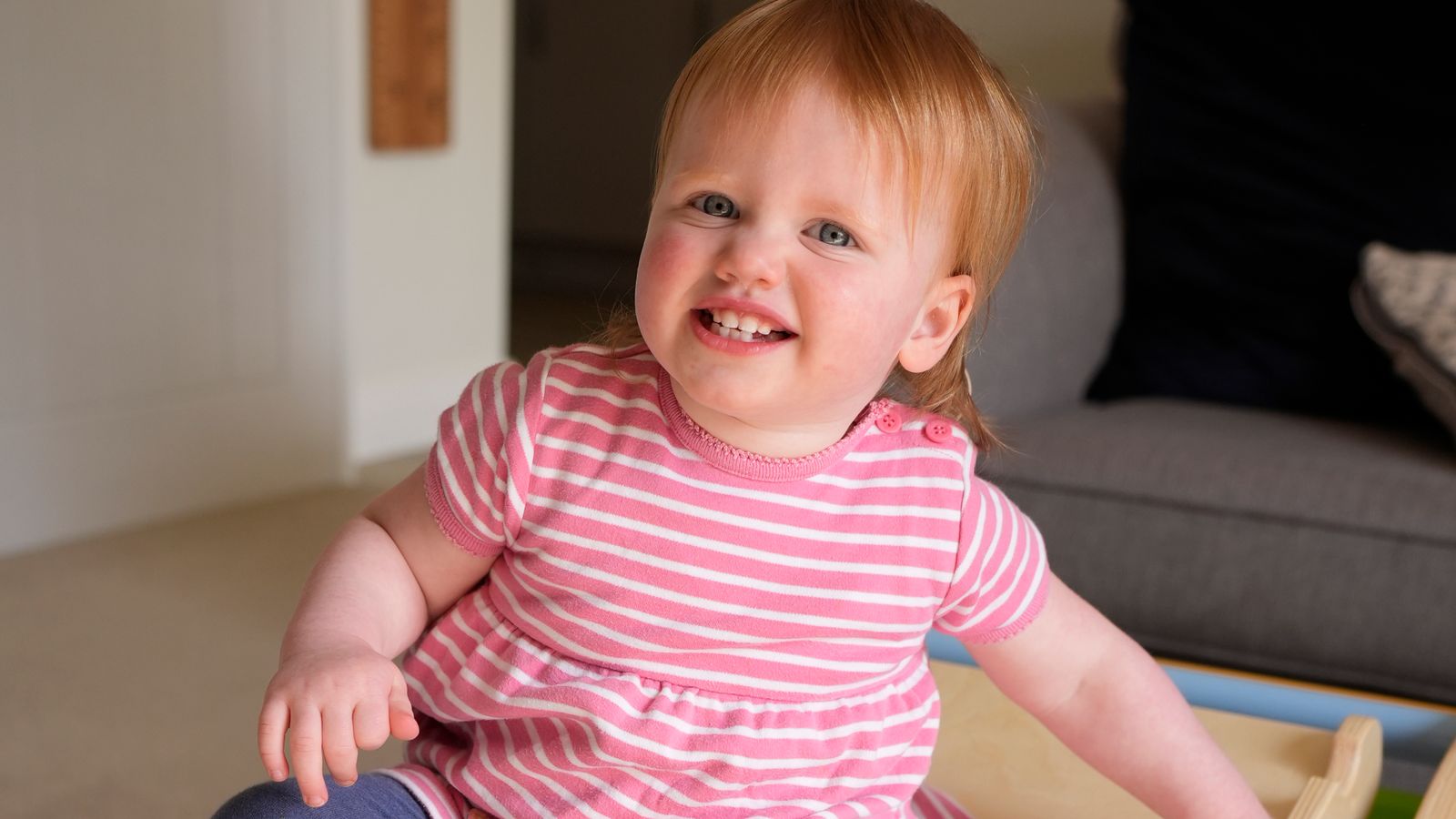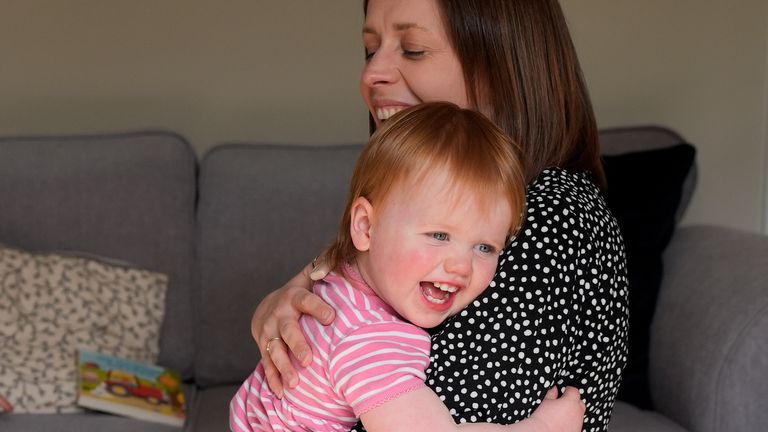
A British girl has had her hearing restored after becoming the first person worldwide to take part in a pioneering new gene therapy trial.
Opal Sandy was born totally deaf due to auditory neuropathy, which disrupts nerve impulses from the inner ear to the brain.
But the 18-month-old’s hearing is now almost normal – and could improve further – after having the one-time treatment.
Opal was treated at Addenbrooke’s Hospital in Cambridge and the head of the trial, Professor Manohar Bance, said results were “better than I hoped or expected” and he hopes medics might be able to cure others with this type of deafness.
“We have results from (Opal) which are very spectacular – so close to normal hearing restoration. So we do hope it could be a potential cure,” he said.
Auditory neuropathy can be caused by a fault in the OTOF gene, which makes a protein called otoferlin and enables cells in the ear to communicate with the hearing nerve.
Opal, from Oxfordshire, had an infusion of the working gene into her right ear during surgery in September – the treatment developed by biotech firm Regeneron.
Her parents noticed changes in only four weeks and the improvements were especially noticeable 24 weeks later.
Jo and James Sandy, both 33, said they were “gobsmacked” when she responded to sound tests at home without her cochlear implant, the usual way to treat the condition.
“I thought it was a fluke or like a change in light or something that had caught her eye, but I repeated it a few times,” said Mrs Sandy.
They say she now enjoys the sound of slamming her cutlery on the table and playing with toy drums and wooden blocks.
“We were told she had near normal hearing last time,” she added. “I think they got responses at sort of 25 to 30 decibels.
“I think normal hearing is classed at 20 decibels, so she’s not far off. Before, she had no hearing whatsoever.”
Opal’s surgery was very similar to fitting a cochlear implant, according to Prof Bance.
He said the inner ear (cochlea) was opened and the treatment infused using a catheter over 16 minutes.
“We have to make a release hole in another part of the ear to let the treatment out because it has to go all the way through the ear,” he said.
“And then we just repair and close up, so it’s actually a very similar approach to a cochlear implant, except we don’t put the implant in.”
Read more from Sky News:
Sperm whale ‘phonetic alphabet’ discovered
Orangutan uses plant to treat wound
He said the gene therapy potentially “marks a new era in the treatment for deafness”.
“It was just the fact that we’ve been hearing about this for so long, and there’s been so much work, decades of work… to finally see something that actually worked in humans… It was quite spectacular and a bit awe-inspiring really,” he said.
The treatment was developed especially for children with OTOF mutations, and a second child who has had the same surgery is also seeing positive results.
The trial has three parts – with three deaf children, including Opal, getting a low dose in just one ear.
Another three children will get a high dose on one side. Then, if safe, a new set of children will get a dose in both ears at the same time.
Up to 18 people from the UK, US and Spain are being recruited and will be followed up for five years.
Results of the study were presented on Wednesday to the American Society of Gene and Cell Therapy conference in Baltimore.














